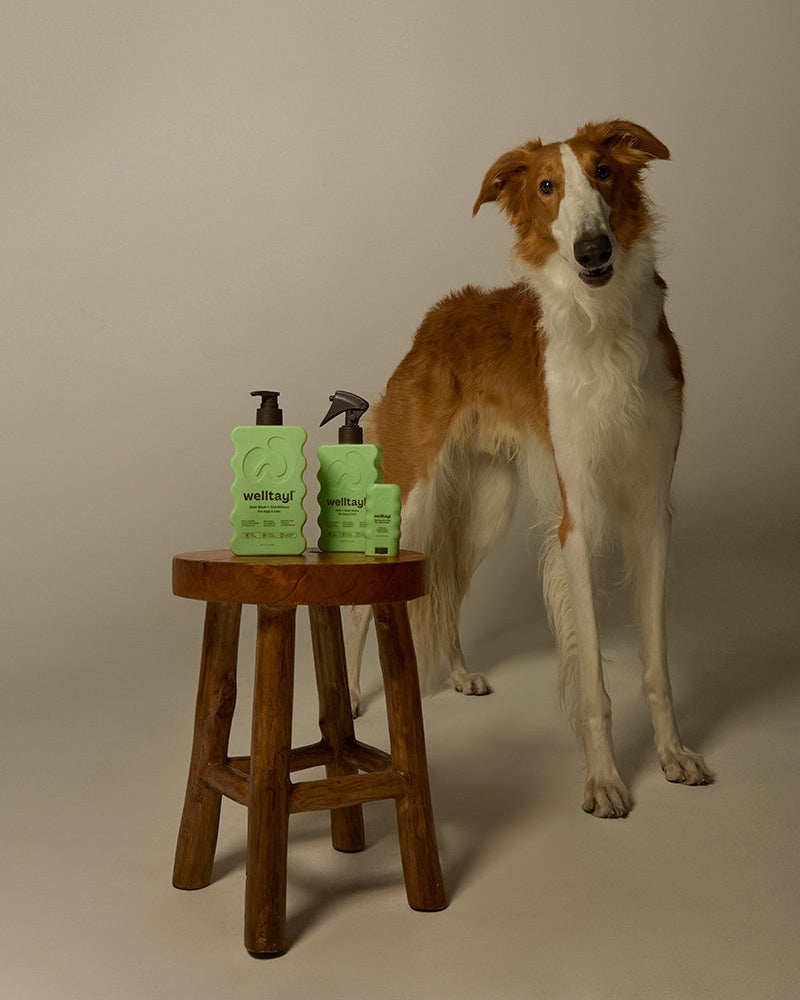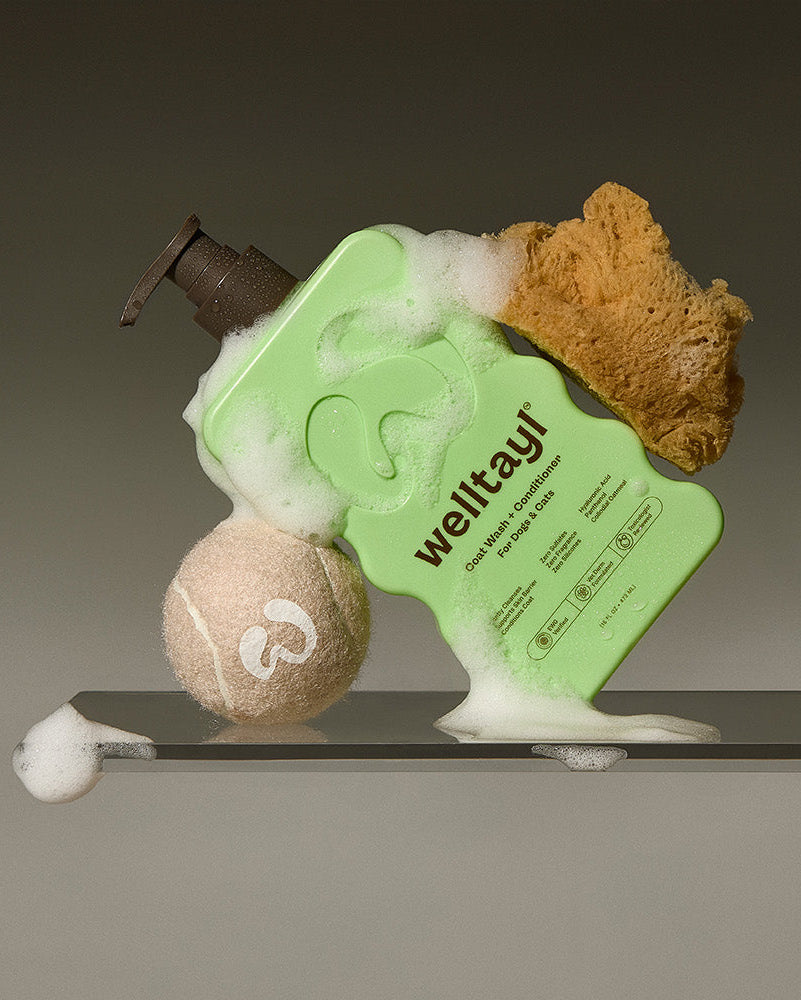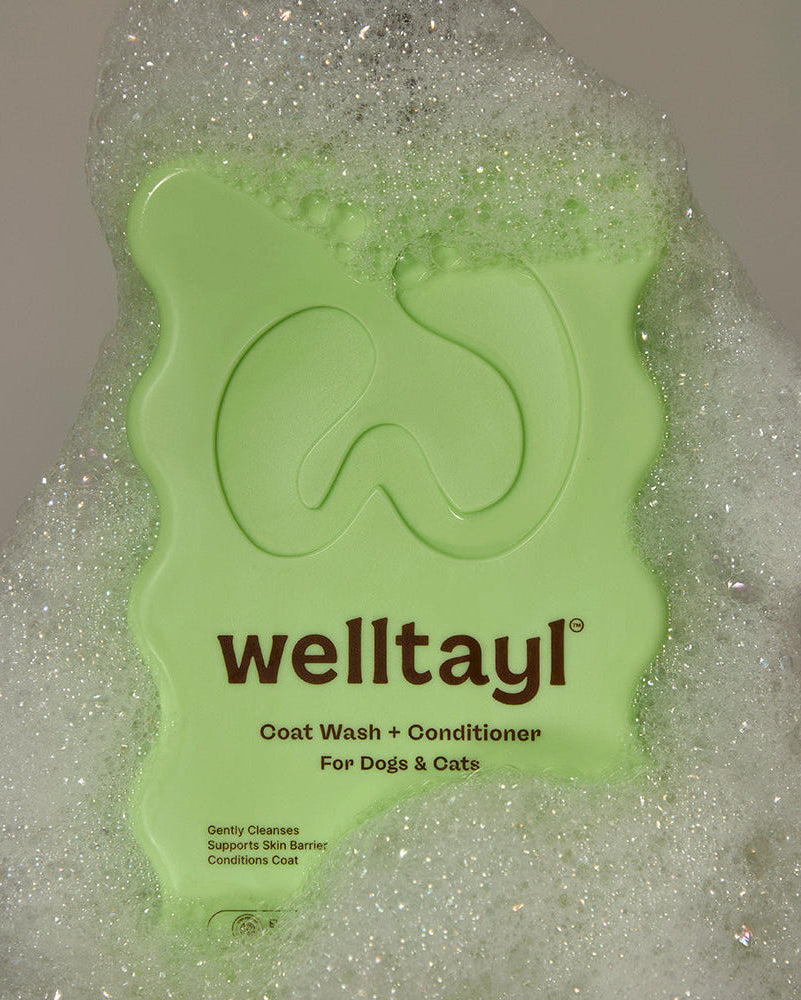Is your dog constantly scratching themselves, and looking uncomfortable, or even a bit miserable? If so, they might be dealing with skin allergies, a common issue among dogs that can cause a lot of discomfort. Just like people, dogs can react to a variety of allergens, from pesky fleas to certain foods, or even something as simple as the pollen floating through the air.
Understanding what's making your dog itchy is the first step to providing them relief. Skin allergies in dogs, also known as allergic dermatitis, are common among dogs in varying degrees.The good news? Once you pinpoint the cause, there are ways to treat these allergies and help your dog feel better.
So, let's dive into what might be irritating your dog's skin and explore how you can help them stop the scratch cycle for a happier, more comfortable life.
Table of Contents:
- Key Takeaways
- Symptoms of Skin Allergies in Dogs
- Causes of Skin Allergies in Dogs
- How to Diagnose Skin Allergies in Dogs
- Treatment Options for Dog Skin Allergies
- Remedies for Dog Skin Allergies
- Preventing Skin Allergies in Dogs
- When to Consult a Vet
- Frequently Asked Questions
Key Takeaways
- 💢 Symptoms of Skin Allergies: Dogs with skin allergies often exhibit persistent scratching, red or inflamed skin, hair loss, foul odors, frequent ear infections, and chewing or licking of their paws. These signs indicate discomfort and the potential presence of an allergy.
- 🦠 Common Allergens: Allergic reactions in dogs can be triggered by environmental factors such as pollens, molds, or dust mites, or by food allergens like proteins or grains. Some dogs are hypersensitive to flea saliva leading to a reaction known as Flea Allergy Dermatitis (FAD).
- 🧑⚕️ Diagnosis: To accurately diagnose skin allergies, veterinarians may perform physical examinations, review the dog's medical and diet history, and conduct allergy testing such as skin or blood tests to identify specific allergens affecting the dog.
- 🧴 Treatment Options: Treatments include topical applications like medicated shampoos and creams, oral medications such as antihistamines, immunomodulators or steroids, and hypoallergenic diets that avoid common allergens. Flea prevention is key for pets with suspected flea allergies.
- 💉 Immunotherapy: For long-term management, immunotherapy (allergy shots or oral supplements) may be recommended to gradually desensitize the dog's immune system to their allergens.
- ✋ Preventative Measures: While skin allergies cannot be completely prevented in most cases, regular grooming, using flea preventatives, maintaining a clean environment, and providing a balanced diet with necessary supplements like omega fatty acids can help reduce skin allergies.
- 🐕🦺 When to See a Vet: It's important to consult a veterinarian if your dog shows persistent symptoms of allergies, such as continuous itching, worsening skin condition, or behavioral changes. It may be necessary to adjust treatment plans or address more severe issues, like secondary infections.
Symptoms of Skin Allergies in Dogs
Identifying skin allergies in dogs is crucial, and knowing the symptoms can greatly assist in timely management. If you notice your dog excessively scratching or biting itself, it might indicate an underlying issue. Here are the main symptoms of skin allergies in dogs:
- Persistent Scratching: If your dog won't stop scratching, chewing or licking certain areas of its body, this discomfort could be related to allergies.
- Red or Inflamed Skin: Look for areas where the skin appears red or irritated.
- Hair Loss: Allergies can cause dogs to lose hair in the patches where they scratch the most or where secondary infection is occurring.
- Odor from Skin: A foul odor emanating from your dog's skin can be a sign of infection secondary to allergies.
- Ear Infections: Dogs with skin allergies frequently suffer ear infections, characterized by redness, discharge, and swelling in the ear canal.
- Chewing on Paws: Frequent paw licking or chewing can be a subtle sign as your dog tries to relieve allergic itch. In pets with lighter colored fur, sometimes a rust color may be noted in these areas when excessive licking is occurring.
Each of these symptoms, if observed, calls for a consultation with your vet. Early identification and management can prevent more severe issues like infections which require additional treatment.

Causes of Skin Allergies in Dogs
Skin allergies in dogs, known as allergic dermatitis, are a significant concern for pet owners. Allergies can cause your dog a lot of discomfort, from incessant scratching and skin flakiness to secondary infections. It's vital to understand the common causes of these allergies to effectively manage and prevent them where possible. Here’s a breakdown of the major allergens that might be affecting your pet.
Environmental Allergens
Environmental allergens encompass a range of elements that can trigger a dog’s allergies. Common environmental triggers include:
- Pollens: Similar to humans, dogs can suffer from hay fever. Pollen from trees, grasses, and weeds can lead to symptoms like itchy, red skin, especially during high pollen seasons.
- Molds: Mold spores, which are more prevalent in damp environments, can also be a significant problem. Mold allergies are often worse in humid conditions.
- Dust Mites: These tiny critters are practically ubiquitous, found in household dust and are a common year-round allergen. They can cause dogs to scratch, bite, and lick their skin constantly.
Controlling these environmental factors where possible can reduce symptoms. Regular cleaning, using air purifiers, and limiting time outdoors during high pollen alerts can help.
Food Allergens
Dogs can also develop allergies to ingredients found in their food. Common culprits include:
- Proteins: Beef and chicken are typical protein sources that can trigger allergies in some dogs.
- Grains: Wheat or corn may also be problematic for dogs with grain sensitivities.
Symptoms of food allergies are not limited to the skin. They can also include gastrointestinal issues such as vomiting and diarrhea. Implementing an elimination diet, then reintroducing ingredients one at a time, can help pinpoint the offending allergen.
Flea Bites
Flea Allergy Dermatitis (FAD) is common and can become severe if left untreated. Dogs with FAD are allergic to flea saliva, which makes even a single flea bite intensely itchy. Typically, this results in severe itching over the lower back and base of the tail, and can cause the skin to become red, inflamed, and scabby.
Preventive flea treatments are essential and should be a regular part of your pet care routine. Consult your vet for the most effective flea control methods.
Stay Informed
For more insights into managing your dog's health and to keep up-to-date with the latest vet-approved advice, subscribe to the Welltayl newsletter. Staying informed will help you ensure your pet remains happy, healthy, and well cared for. Subscribe Now!

How to Diagnose Skin Allergies in Dogs
When your dog starts showing signs of discomfort and itching, recognizing and addressing possible skin allergies early can make a significant difference. Below, you'll find a guide to how vets diagnose canine skin allergies.
Veterinary Check-up
Scheduling a visit with your veterinarian is the first step in diagnosing skin allergies in your dog. Allergies are a diagnosis of exclusion which speaks to the importance of consulting your veterinarian to help rule out other issues. During the appointment, the vet performs a thorough physical examination. This includes:
- Examining Your Dog's Skin: Checking for signs like redness, sores, and excessive scratching and looking for evidence of secondary infection.
- Reviewing Medical and Diet History: Assessing past health records to identify any recurring issues and discussing any recent diet changes.
If your vet suspects allergies, they might propose further investigation to pinpoint the exact allergens affecting your dog. Remember, a couple of visits may be needed if the allergy symptoms are intermittent or require observation under different environmental conditions.
Allergy Testing
Allergy testing is an effective way to identify what's causing your pup's discomfort. Here's what typically happens:
- Intradermal Skin Testing: Small amounts of several different environmental allergens are injected under your dog’s skin. After a certain amount of time, a trained professional, typically a veterinary dermatologist, looks for the severity of reaction to each allergen.
- Blood Testing: A blood sample is drawn and then the serum is analyzed for excessive antibodies to different types of environmental allergens.
Elimination Diet Trial: These diet trials are the only way to accurately diagnose food allergies in dogs. Typically the pet is fed a novel protein or a hydrolyzed protein only for 8 weeks. Specific ingredients can be reintroduced individually to find the culprit when the patient relapses.
Although these tests provide valuable information, they aren't foolproof and results might sometimes be inconclusive. Because of this, it's essential to test during flare-ups or allergy seasons for more accurate results. Depending on what the tests reveal, your vet can create a tailored treatment plan to help manage your dog's allergies effectively.
Treatment Options for Dog Skin Allergies
Topical Treatments
Topical treatments can provide immediate relief to your dog's skin, making them a vital part of managing skin allergies. These treatments can include medicated shampoos, ointments, and creams. Medicated shampoos can help soothe irritated skin and reduce inflammation. They are often antibacterial and antifungal, making them useful for managing secondary infections. Ointments and creams applied directly to affected areas can quickly alleviate symptoms, allowing for healing. Ingredients like hydrocortisone and oatmeal are common in these products for their soothing properties.
Oral Medications
If topical treatments aren't enough, your vet might recommend oral medications. These include drugs like antihistamines and steroids, which reduce inflammation and suppress allergic reactions. Immunomodulators such as Apoquel or cyclosporine can help keep the immune system from overreacting to allergens. Oral medications can effectively manage symptoms, and are often necessary in moderate to severe cases. However, monitoring for side effects is crucial, as some medications can cause drowsiness or changes in appetite.
Hypoallergenic Diets
Sometimes, what your dog eats can trigger allergies. Switching to a hypoallergenic diet can be a game-changer. These diets are formulated with limited ingredients to reduce the risk of allergic reactions. Key components like novel proteins (such as duck or venison) and carbohydrate sources that your dog has not been exposed to before can help eliminate symptoms. Some pets may need a hydrolyzed protein diet, meaning the ingredients are broken up into smaller components that your pet’s immune system can’t recognize and then over react to. Consult your vet to find the best diet plan tailored to your dog’s specific needs.
Allergy Shots
Allergy shots, or immunotherapy, are used for long-term management of allergies. They work by gradually desensitizing your dog's immune system to the allergens that cause reactions. This process involves initially frequent injections that become less frequent over time. For patients (or owners) who don’t handle needles well, an oral liquid may be an option too. Although it requires a commitment to a regular schedule, immunotherapy can significantly reduce the severity of allergic responses in the long run.
Remedies for Dog Skin Allergies
Bathing and Grooming
Regular bathing and grooming are essential for managing your dog's skin allergies. Bathing your dog once a week with a hypoallergenic, fragrance-free shampoo like Welltayl's Coat Wash + Conditioner can significantly reduce skin irritation and allergens present on the skin. Make sure to thoroughly rinse off any shampoo residue, as this can cause more itching and irritation if left behind. Grooming, especially brushing, helps in removing dander and loose fur, which accumulates allergens. Incorporate brushing into your daily routine to keep your dog's coat healthy and to reduce exposure to allergens.
Supplements
Adding supplements to your dog's diet might offer additional relief from skin allergies. Omega-3 fatty acids, commonly found in fish oil supplements, are known for their anti-inflammatory properties that can help soothe irritated skin and promote the natural skin barrier. Additionally, probiotics can aid in maintaining a healthy gut flora, which is crucial for overall health and can impact skin condition. Consult your veterinarian before introducing any supplements to ensure they are safe and appropriate for your dog’s specific health needs.
Preventing Skin Allergies in Dogs
Implement Flea Prevention Strategies
To tackle flea allergies, adopting preventive measures rather than seeking relief after the fact is crucial. Ensuring your pet is on a year round flea preventative is important to being proactive for your pet. Products that repel fleas, ticks, and even mosquitoes play a vital role in keeping your dog's skin healthy.
Regular Cleaning and Grooming
Pollens and other environmental allergens can stick to your dog's fur. Giving your dog regular baths with a hypoallergenic shampoo or using fragrance-free wipes, especially on their paws, can help remove these irritants. This step is particularly important during high pollen seasons or after walks in grassy or wooded areas.
Nutritional Supplements
Adding omega fatty acid supplements to your dog’s diet may help soothe and protect their skin. These supplements, often found in fish oil, can enhance the strength and shine of your dog's coat while promoting the skin’s natural barrier function.
When to Consult a Vet
Knowing when to consult a vet for your dog's skin allergies is crucial for their well-being. Even with the best care at home—including appropriate diet , flea prevention, and regular grooming—professional guidance from a veterinarian can make a significant difference. If you notice any of the following issues despite your preventative efforts, it's time to make an appointment with the vet.
- Persistent Itching: If your dog continues to scratch excessively, despite trying various allergy remedies, it might indicate a more severe condition or an allergy not properly managed by current methods.
- Worsening Skin Conditions: Redness, sores, or infections are clear signs that veterinary intervention is needed. Skin conditions can quickly escalate without proper treatment.
- Behavioral Changes: Watch for signs such as increased agitation, depression, change in appetite or lethargy. These can be indirect symptoms of discomfort or pain related to skin allergies.
- Poor Response to Standard Treatments: If treatments that previously worked are no longer effective, it suggests that your dog's condition may have changed or progressed.
If you're unsure whether your dog's symptoms are severe enough to warrant a vet visit, err on the side of caution and consult your vet. They can provide tailored advice and, if necessary, update your dog’s treatment plan. Monitoring your dog’s health closely lets you react quickly to any signs of allergies, ensuring they remain happy and healthy.
Lastly, if you've found the advice in this discussion helpful, and you're interested in staying updated with more expert pet care tips, consider subscribing to the Welltayl newsletter. Just click on the subscription link provided in our article. It's a great resource for pet owners looking for ongoing guidance and support.
Frequently Asked Questions About Dog Skin Allergies
What Is the Most Common Skin Allergy in Dogs?
The most prevalent skin allergy in dogs is Flea Allergy Dermatitis (FAD). It's triggered by flea bites, specifically the saliva of fleas, which causes intense itching and discomfort. You'll often see your dog scratching ferociously, especially around the lower back and tail base area. This condition quickly leads to inflamed skin, which can turn into sores if not treated promptly.
How Do You Treat Skin Allergies in Dogs?
Treatment for skin allergies in dogs typically involves multiple approaches:
- Identifying and Eliminating the Allergen: This may mean changing their diet, improving cleaning habits in your home, or using flea preventative treatments.
- Medication: Your vet might prescribe antihistamines, steroids or immunomodulators to control the severity of the symptoms.
- Topical Treatments: Medicated shampoos and ointments can soothe itchy and inflamed skin.
If your dog's symptoms persist, it's essential to visit the vet to rule out other conditions and adjust the treatment plan accordingly.
Will Bathing My Dog Help My Allergies?
Yes, regular bathing can help reduce allergens on your dog's coat, which can be beneficial if you're allergic. However, it's crucial not to over-bath your dog as it can dry out their skin and exacerbate allergies. Generally, bathing your dog once a month is sufficient, or you might adjust based on your vet's advice..
What Does Dermatitis Look Like on a Dog?
Dermatitis in dogs manifests as red, inflamed skin, often accompanied by flaky or scaly patches. You might also notice hair loss, sores, and crusty skin. These symptoms are often most apparent around the ears, eyes, paws, and belly. Monitoring these signs closely and consulting with your vet can ensure timely and effective treatment.
Resources:
Read more

Your Dog can get a sunburn on its nose. Learn about prevention, high-risk breeds, and effective treatments to keep your furry friend safe in the sun.

Discover safe and easy no-water cleaning tips for your dog. Learn how to use dry bath shampoo to keep your pet fresh and clean without the hassle.










